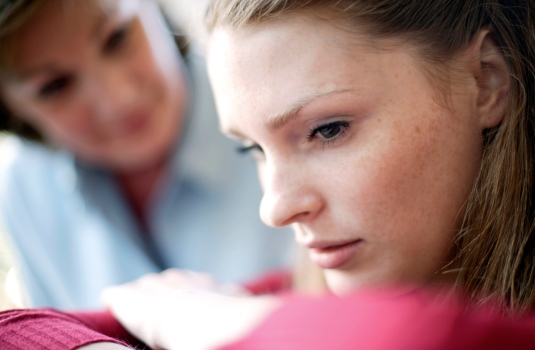Government to trial child and adolescent mental health four-week referral deadline

A new four-week waiting time standard for children and young people referred for mental health treatment by GPs and other professionals is to be trialled, the Government has announced.
The first pilot sites will be finalised in the autumn and it is expected that between 20% and 25% of the country will have measures in place by the end of 2022/23, according to a green paper published yesterday.
GPs have welcomed the plans, which have been developed by the Department of Health and Social Care and Department for Education, and stressed the importance of early intervention.
However, they also highlighted that workforce issues faced by mental health services could pose a ‘challenge’ to meeting the new waiting times.
Yesterday’s announcement follows a consultation on children and young people’s mental health support, which ended in March 2018 and received more than 2,700 responses.
Other proposals in the green paper include the introduction of designated senior leads for mental health in schools and colleges, and CCG-funded mental health support teams, designed with input from teachers.
In its response to the consultation, published yesterday, the Government said: ‘From 2018, pilot areas will seek to start planning for and then providing access to evidence-based treatment on average within four weeks.’
It said pilots would take place in ‘trailblazer’ areas that would likely cover populations larger than those attached to the new mental helath support teams due to the range of numebrs of schools in different CCGs.
Pilots will be expected to achieve the four-week waiting time ambition ‘for as many children and young people as possible, based on need’ and will apply to ‘all referral routes’ inlcuding self-referral, or referrals through GPs, said the Government.
However, it added that ‘children in crisis will continue to be seen much quicker, as is currently the case’.
The document, which was presented to parliament by the health secretary and education secretary, said that while the waiting time proposals will initially only be introduced in certain areas, the future ambition is to implement the approach ‘across 20-25% of the country by end of 2022/23’.
The pilot sites will be used to ‘establish a clear understanding of the costs, benefits, challenges and indicators of success of introducing a four-week wait,’ it said.
Academic GP and RCGP clinical fellow for mental health Dr Faraz Mughal said: ‘Piloting these waiting standards around the country can only be beneficial for young people and their families.’
However, he added: ‘It could be a challenge in terms of meeting the waiting times, as child and adolescent mental health services (CAMHS) have a workforce issue, especially in consultants and psychiatry doctors.’
He noted there were delays in people being assessed in CAMHS services.
‘The main point is to highlight that an early assessment and early identification of mental health problems in young people can then lead to an improvement in care and early intervention,’ said Dr Mughal.
‘Take the example of someone who is having self-harming thoughts or who has self-harmed in the past – if they are having to wait six to eight months for an initial assessment, and I have heard stories that this does occur, then they are at risk of doing serious or even fatal self-harm,’ he said.
Currently these patients are ‘slowly being put in GP’s hands, the community services hands, and are not getting the expertise that they need,’ he added.
NHS England said it will shortly be in contact with regions that meet the criteria for trialling the waiting-time targets, with confirmation of the pilots in the autumn.
Pilots of the waiting time targets – and also the mental health support teams and designated senior leads for mental health in schools and colleges – will be funded by CCGs. They are due to be in place in 10 to 20 regions by the end of 2019.
Child and adolescent mental health services in England
In 2015, it was reported that NHS spending on child and adolescent mental health services had fallen 6% in real terms since 2009/10, with almost £50m less spent on Child and Adolescent Mental Health Services (CAMHS) in 2012/13 than in 2009/10.
GPs then raised concerns in a 2016 Pulse survey, which found the majority of GPs felt they have to diagnose child and adolescent mental health disorders ‘above their level of competence’ due to a marked deterioration in access to specialist services.
Following this, Pulse revealed an increasing number of vulnerable children were being refused vital mental health treatment despite it being recommended by their GP. In figures obtained from 15 mental health trusts, it was shown that 60% of GP referrals to CAMHS led to no treatment and a third were not even assessed.
Pulse later found that five areas in England were planning to cut spending on mental health services in 2017/18, despite being told by NHS England to increase spending in line with physical health spending.
This year, the Government has announced a new £25m three-year investment programme for eight communities worst affected by suicide across England, which aims to improve suicide prevention strategies and help drive better surveillance and collection of data on suicide, attempted suicide, and self-harm.
Pulse July survey
Take our July 2025 survey to potentially win £1.000 worth of tokens

Visit Pulse Reference for details on 140 symptoms, including easily searchable symptoms and categories, offering you a free platform to check symptoms and receive potential diagnoses during consultations.










